
OPERATION SEA GUARDIAN
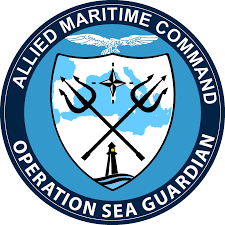
Operation Sea Guardian is a flexible operation that can potentially cover the full range of Maritime Security Operations (MSO) tasks. At present, it is carrying out maritime security capacity building, and providing support to maritime situational awareness and to counter-terrorism.
Operation Sea Guardian can execute any of the four additional MSO tasks, if requested by the Noth Atlantic Council (NAC):
- Knowledge of the maritime environment.
- Deterrence and protection against terrorism.
- Contribute to the development of regional maritime security capabilities.
- Uphold freedom of navigation.
- Conduct maritime interdiction.
- Fight the proliferation of weapons of mass destruction.
- Protect critical infrastructure.
Through Operation Sea Guardian, NATO is contributing to the maintenance of a secure and safe maritime environment, while collaborating with other actors, such as the European Union (EU).
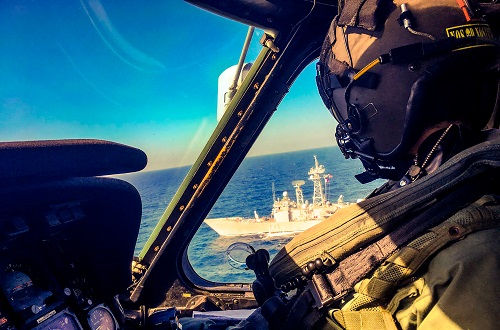
In today’s globalised economy, 90 per cent of the total volume of goods is moved by sea and communication cables that carry 95 per cent of the world’s cyberspace traffic lie on the sea-bed. The Mediterranean Sea is no exception. In terms of energy alone, some 65 per cent of the oil and natural gas consumed in Western Europe pass through the Mediterranean each year.
In this context, NATO launched Operation Sea Guardian in November 2016, which aims to reinforce maritime situational awareness, counter-terrorism efforts including through the hailing and the boarding of suspect vessels, and capacity-building in the Mediterranean Sea. These tasks focus on gathering relevant information about current maritime activities in the Mediterranean region to help identify possible security concerns, and therefore continue to develop maritime security awareness in the region. Nevertheless, if the NAC so decides, the Operation can conduct any of the agreed four additional MSO tasks: uphold freedom of navigation, conduct maritime interdiction, fight the proliferation of weapons of mass destruction, and protect critical infrastructure.
Within the framework of Operation Sea Guardian, NATO supports the EU’s Operation Sophia with regard to information-sharing, logistical support and the implementation of the United Nations Security Council Resolution 2357 (the arms embargo against Libya).
As such, the Mediterranean offers opportunities to deepen maritime cooperation at operational and tactical levels between NATO and the EU, building on previous experience and successes, in particular in the Indian Ocean and the Aegean Sea.
The Operation comes under the operational command of the Allied Maritime Command (MARCOM), Northwood, United Kingdom. MARCOM serves as the hub of maritime security information-sharing for the Alliance.
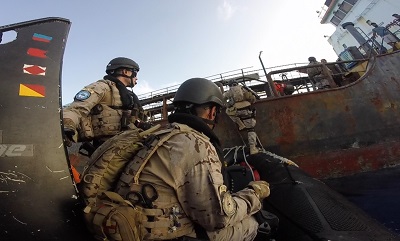
Operation Sea Guardian succeeded Operation Active Endeavour. Similarly to the latter, Operation Sea Guardian operates in the Mediterranean and performs the three below-mentioned MSO tasks. However, it is a non-Article 5 operation as Operation Active Endeavour was.
- Support maritime situational awareness: the focus is on information-sharing between Allies and with civilian agencies to enhance the NATO Recognised Maritime Picture (RMP).
- Support maritime counter-terrorism: this involves the planning and conduct of a range of operations to deter, disrupt, defend and protect against maritime-based terrorist activities. Essentially, these operations aim to deny terrorists access to designated areas and contain threats through the use of forcé.
- Contribute to maritime security capacity building: NATO aims to contribute to the international community’s efforts in developing maritime security with both military and non-military authorities.
If agreed by the NAC, Operation Sea Guardian can perform the following four additional MSO tasks:
- Uphold freedom of navigation: NATO must be ready and able to act in compliance with and support the principle of freedom of navigation in times of peace and war. This includes surveillance, patrol, maritime interdiction, Special Operations, deployment of law enforcement detachments and, when authorised, the use of force.
- Conduct maritime interdiction: assets can be assigned for quick-response actions and may use Special Operations Forces and experts in chemical, biological, radiological and nuclear (CBRN) weapons to board suspect vessels.
- Fight the proliferation of weapons of mass destruction: the aim is to prevent the transport and deployment of weapons of mass destruction, and involves the ability to locate, identify and secure illicit CBRN material transiting at sea.
- Protect critical infrastructure: at the request of a NATO or non-NATO country and in accordance with directions from the NAC, NATO helps protect critical infrastructure in the maritime environment, including the control of choke points.
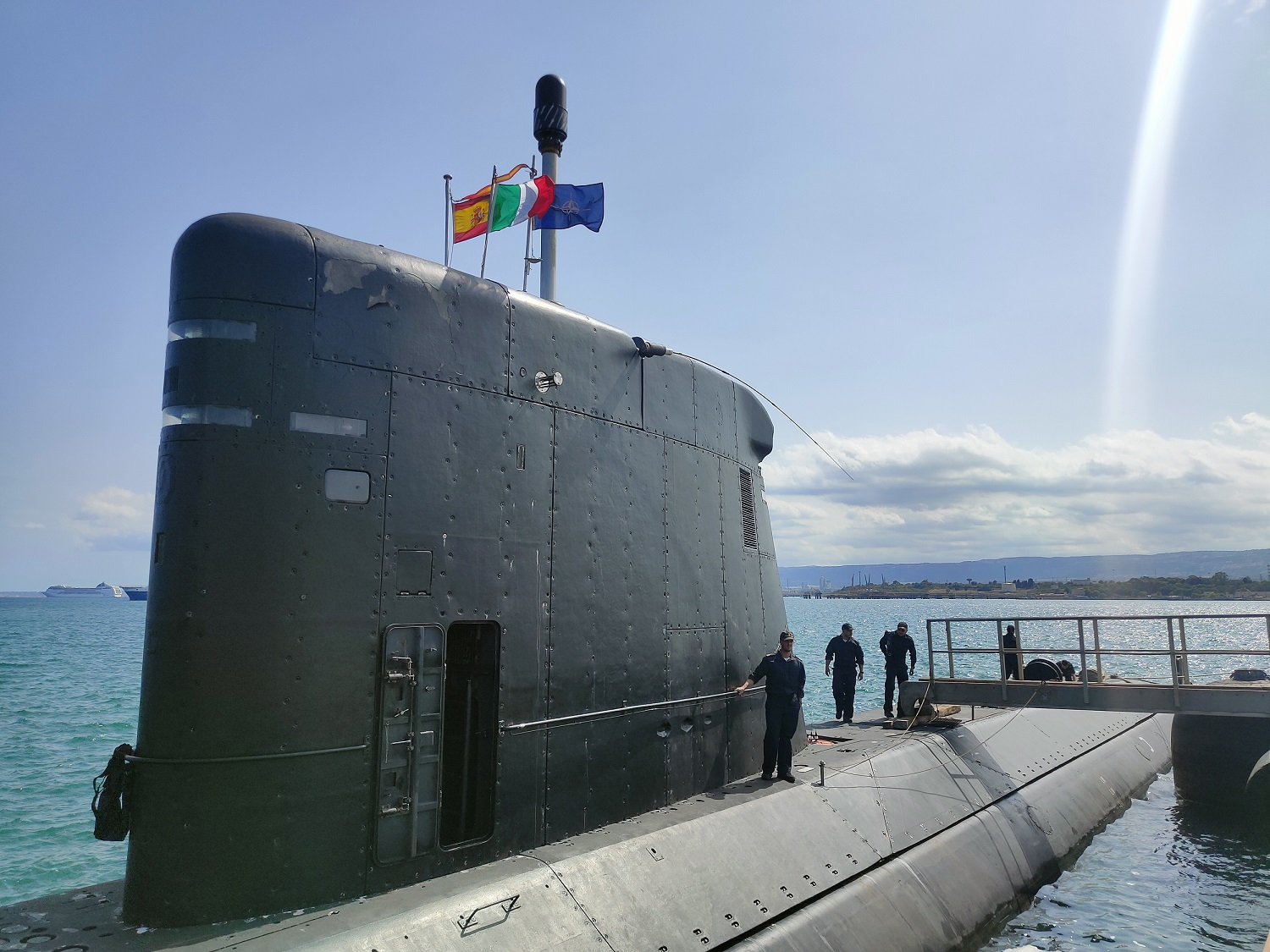
With the approval of the Council of Ministers, Spain is contributing with the following units to Operation Sea Guardian:
- An average of 4 departures per month of Maritime Patrol Airplane (MPA).
- One submarine in one period of 35 days.
- An offshore patrol boat ready to departure in 48 hours on request.
- A leading command ship with an onboard staff available on request.
- Permanent diplomatic authorization for Cartagena and Rota naval bases.
Spain also offers support, on request, to those naval units in transit within Sea Guardian's area of operations.
About OPERATION SEA GUARDIAN
Get to know Operation Sea Guardian (OSG)Youtube video Frigate 'Cristóbal Colón' during OSGYoutube video
2024
- August 26th. The submarine S-71 'Galerna' ends its participation in the operation.
- July18th. The submarine S-71 'Galerna' joins the operation.
- July 31st. The frigate F-82 "Victoria" ends its deployment within Operation Sea Guardian.
- July 8th. The frigate F-82 "Victoria" is integrated into Operation.
- April 18th. The frigate F-85 'Navarra' ends its deployment within Operation Sea Guardian.
- March 26th.The frigate F-85 'Navarra' leaves port to join the operation.
- March 26th. The submarine S-71 'Galerna' ends its participation in the operation.
- February 18th. The submarine S-71 'Galerna' joins the operation.
2023
- December 1st. The frigate F-81 "Santa María" ends its deployment within Operation Sea Guardian.
- November 13th. The frigate F-81 "Santa María" is integrated into Operation.
- November 7th. The submarine S-71 'Galerna' joins the operation.
- July 8th. ESPS 'Furor' P-76 ends its deployment within Operation Sea Guardian.
- June 27th. ESPS 'Furor' P-76 starts its deployment within Operation Sea Guardian.
- January 16th. Submarine 'Tramontana' sets off from Cartagena to join Operation Sea Guardian during one month.
2022
- June 30. ESP Frigate 'Reina Sofía' ends its participation in Operation Sea Guardia.
- June 13. ESP Frigate 'Reina Sofía' gets integrated into Operation Sea Guardian.
- March 28. ESPS 'Audaz' ends deployment within Operation Sea Guardian.
- March 9. ESPS 'Audaz' set sail from Cartagena to join OSG and patroling the western mediterranean Sea.
2021
- September 25. The submarine 'Tramontana' concludes its participation in OSG.
- August 22. Submarine 'Tramontana' sets off from Cartagena to join Operation Sea Guardian.
- February 7 to 16. Spanish Patrol vessel 'Meteoro' takes part on exercise FOCOPS 01/21.
- February 3rd. Frigate 'Cristóbal Colón', SNMG2's flagship, is sailing on associate support to Operation Sea Guardian.
2020
- December 10th. The submarine 'Tramontana' concludes its participation in OSG.
- November 6th. Submarine 'Tramontana' joins NATO's Operation Sea Guardian.
2019
- October 2nd. The submarine ‘Mistral’ has been integrated into the operation for 26 days in the fight against terrorism.
- June 10th. The frigate “Reina Sofía” leads the Force Commander of the Operation Sea Guardian. It plans to remain integrated into this Operation till 30th June.
- February 7th. Spanish submarine “Tramontana” is incorporated into the Operation “Sea Guardian”. This is the first deployment of this kind of unit planned for this year.
2018
- October 8th. The submarine “Tramontana” joins to the operation until April 2019.
- April 23rd. The submarine “Mistral” ceases its participation in the operation.
- March 12nd. The frigate “Navarra” ceases its command on the operation.
- February 22nd. The submarine “Mistral” is incorporated into the Operation Sea Guardian.
- February 14th. Spain leads the Operation Sea Guardian against terrorism in the Mediterranean Sea. Frigate Captain Francisco Javier Vázquez Sanz, Commander of the frigate “Navarra” (F-85) takes command of the group, which also includes the Italian frigate “Eolo” and the Belgian frigate “Louise-Marie”.
2017
- November 29th. The frigate “Numancia” ceases its participation in the operation.
- October 23rd. The submarine “Tramontana” ceases its participation in OSG (Operation Sea Guardian).
- August 23rd. The submarine “Tramontana” is integrated into the operation.
- May-June. The patrol boat “Serviola” and the submarine “Galerna” are integrated into the OSG.
2016
- November 9th. The Operation Sea Guardian is activated.
EMAD PRESS RELEASES ON NATO'S SEA GUARDIAN
-
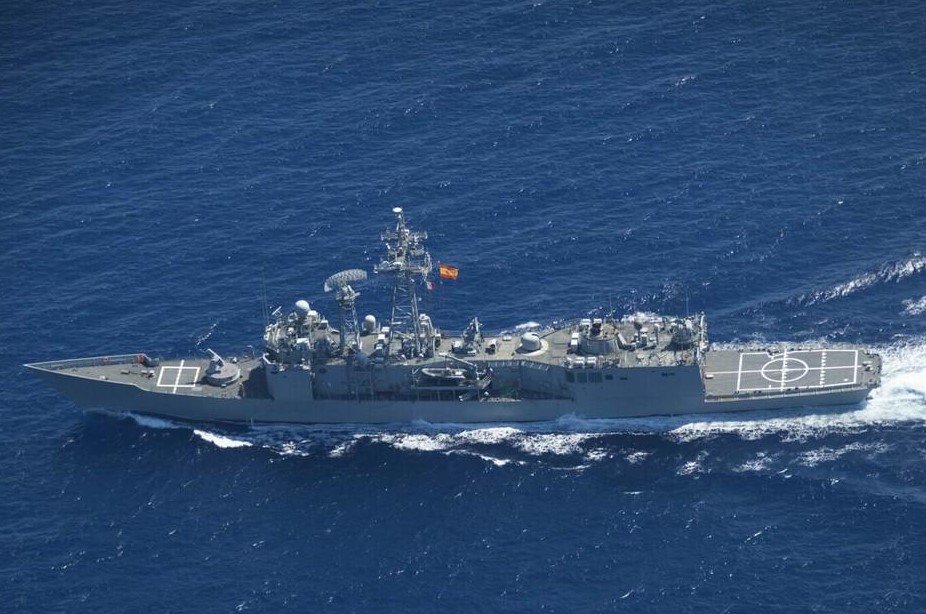
The frigate F-85 'Navarra' will stop at the port of ‘Mahón’
The frigate F-85 'Navarra' will stop at the port of ‘Mahón’
2024/04/13In the Mediterranean Sea.
More information -
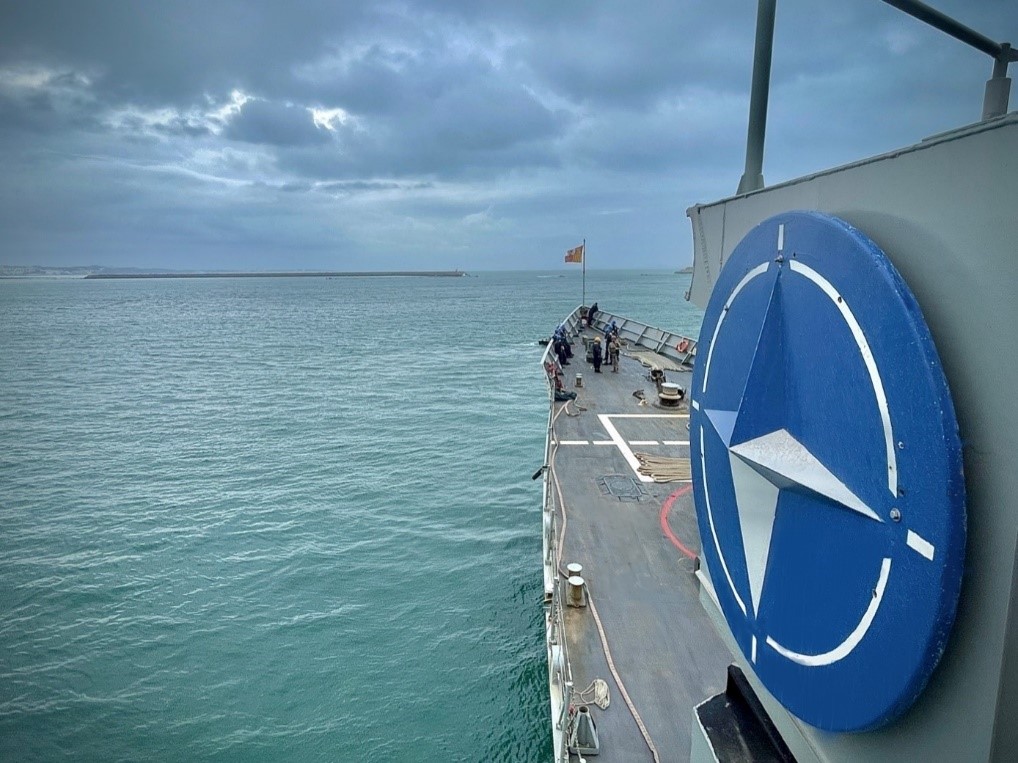
La The frigate F-85 'Navarra' sets sail to take part in the NATO Operation 'SEA GUARDIAN'
La The frigate F-85 'Navarra' sets sail to take part in the NATO Operation 'SEA GUARDIAN'
2024/03/26At sea
More information -
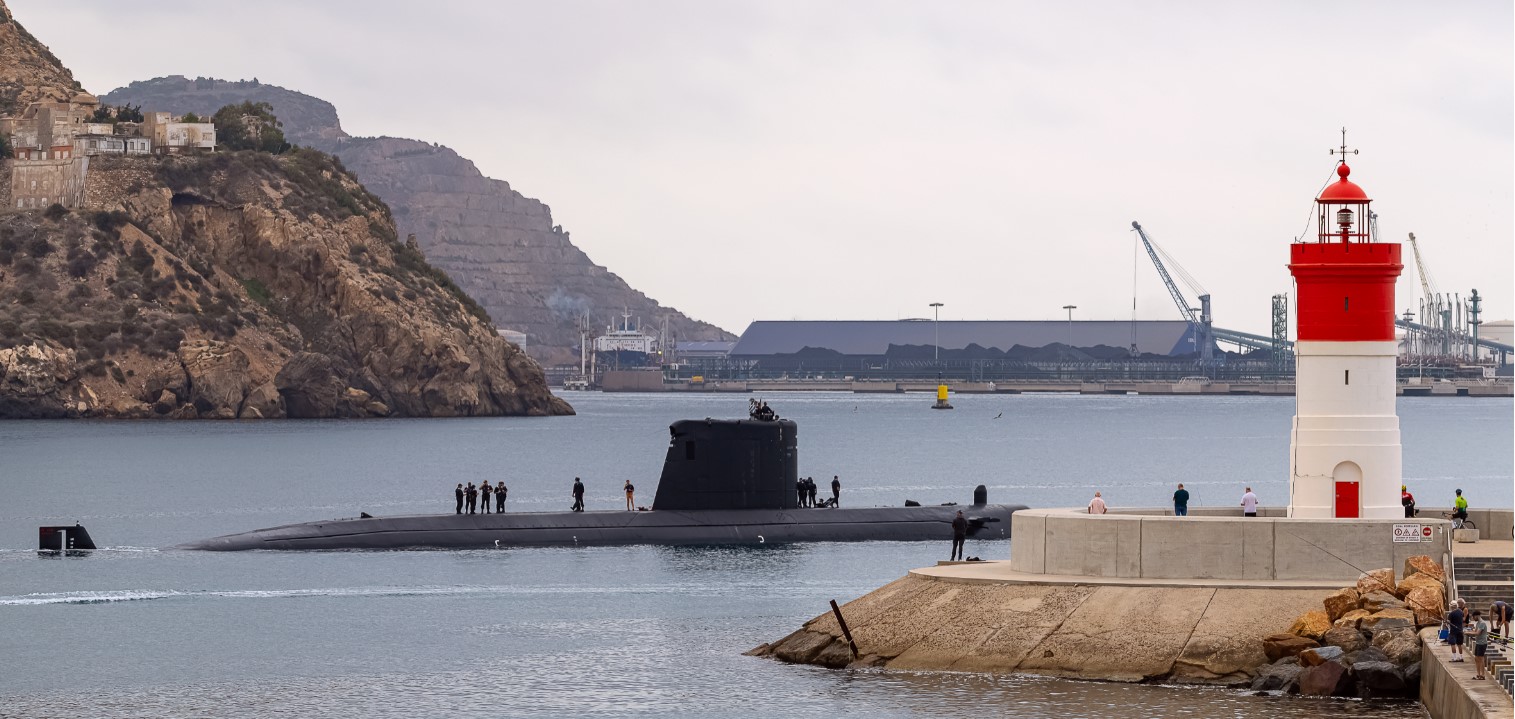
Submarine 'Galerna' joins NATO's Operation ‘Sea Guardian’ in the Mediterranean
Submarine 'Galerna' joins NATO's Operation ‘Sea Guardian’ in the Mediterranean
2024/02/20Cartagena, Murcia
More information -
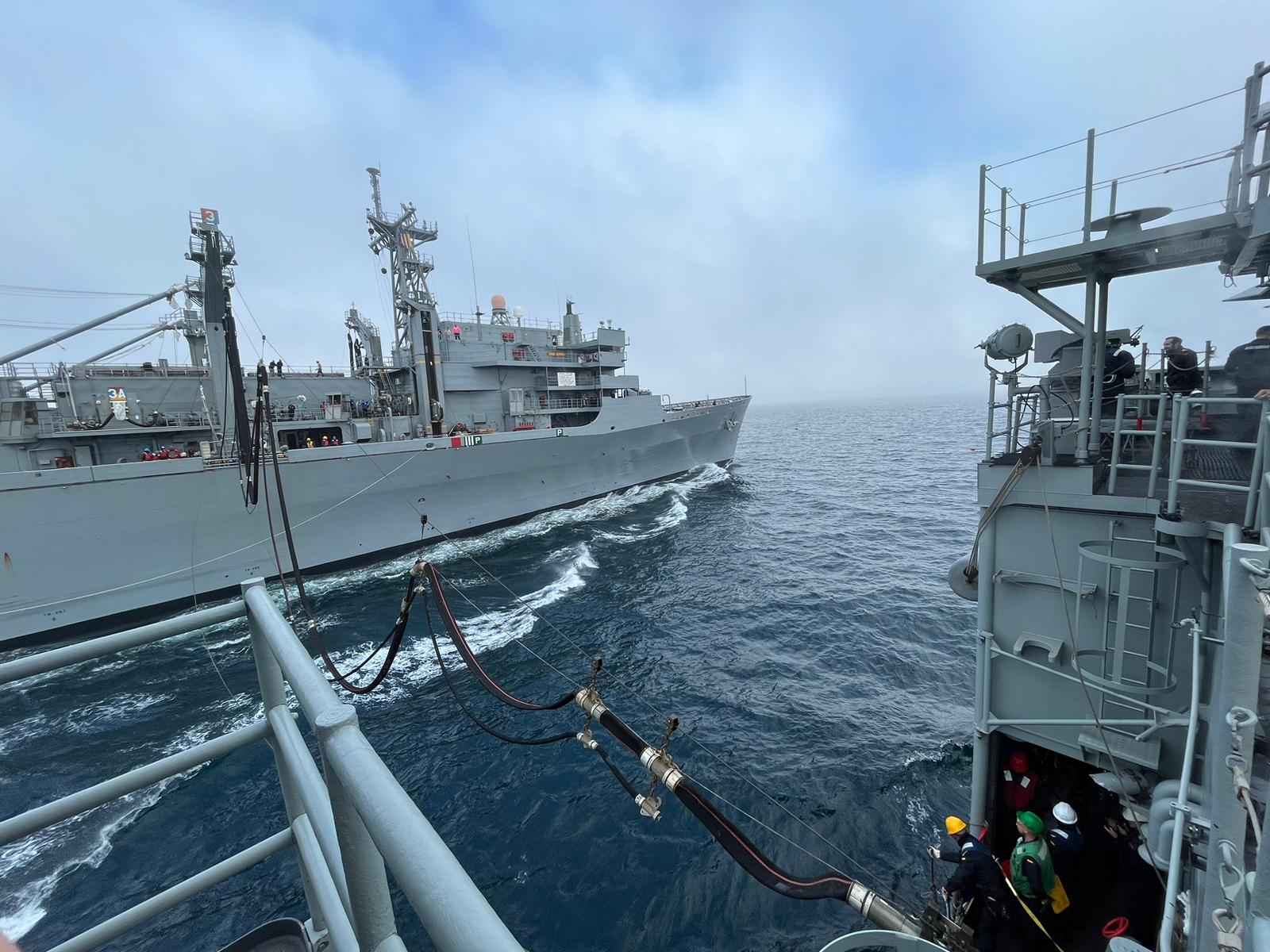
The frigate 'Santa Maria' returns home after finishing her deployment in NATO's operation 'Sea Guardian'.
The frigate 'Santa Maria' returns home after finishing her deployment in NATO's operation 'Sea Guardian'.
2023/12/02Mediterranean Sea
More information -

The frigate Santa Maria visits Algiers under NATO flag in operation Sea Guardian
The frigate Santa Maria visits Algiers under NATO flag in operation Sea Guardian
2023/11/30Mediterranean Sea
More information


